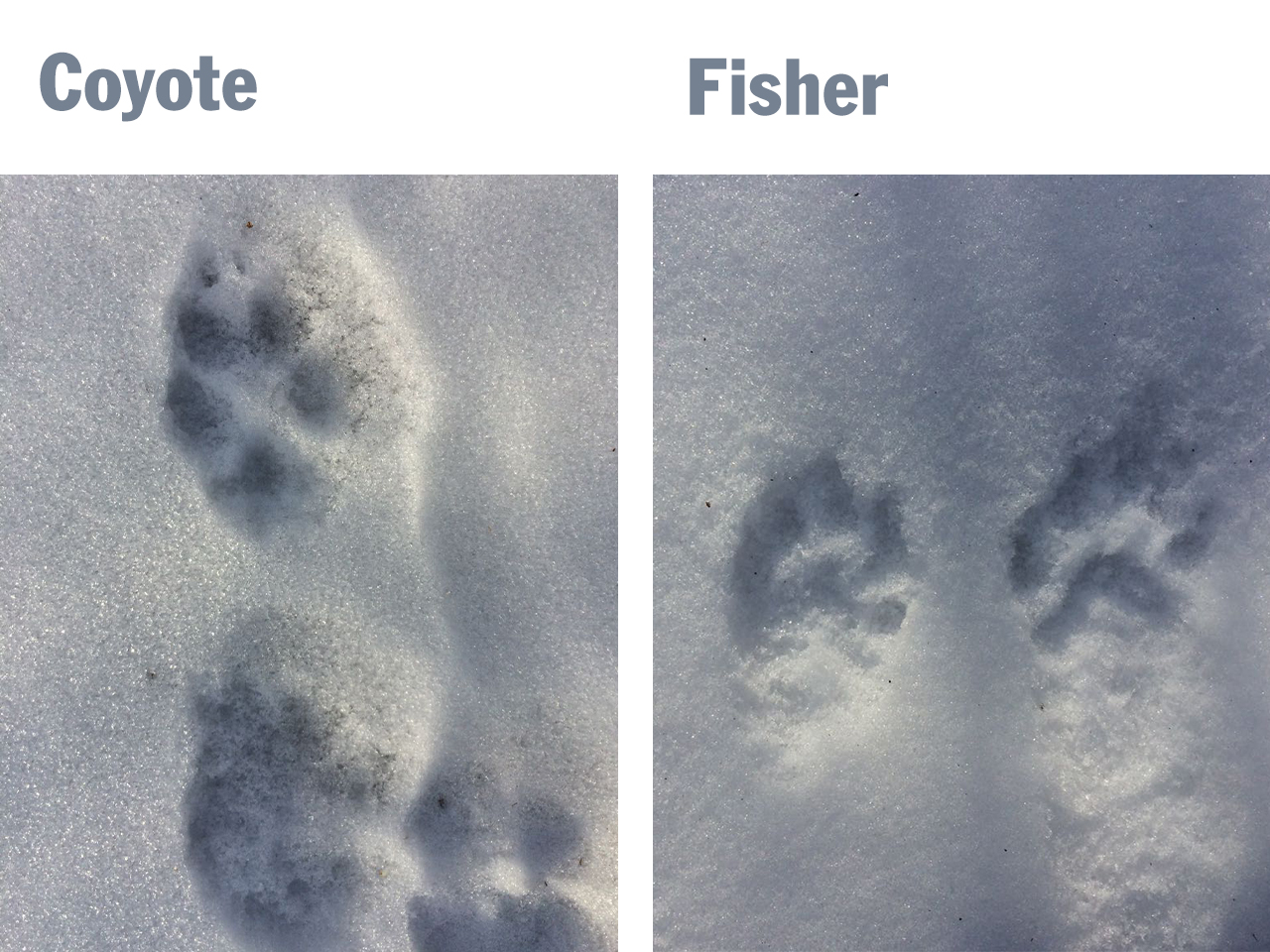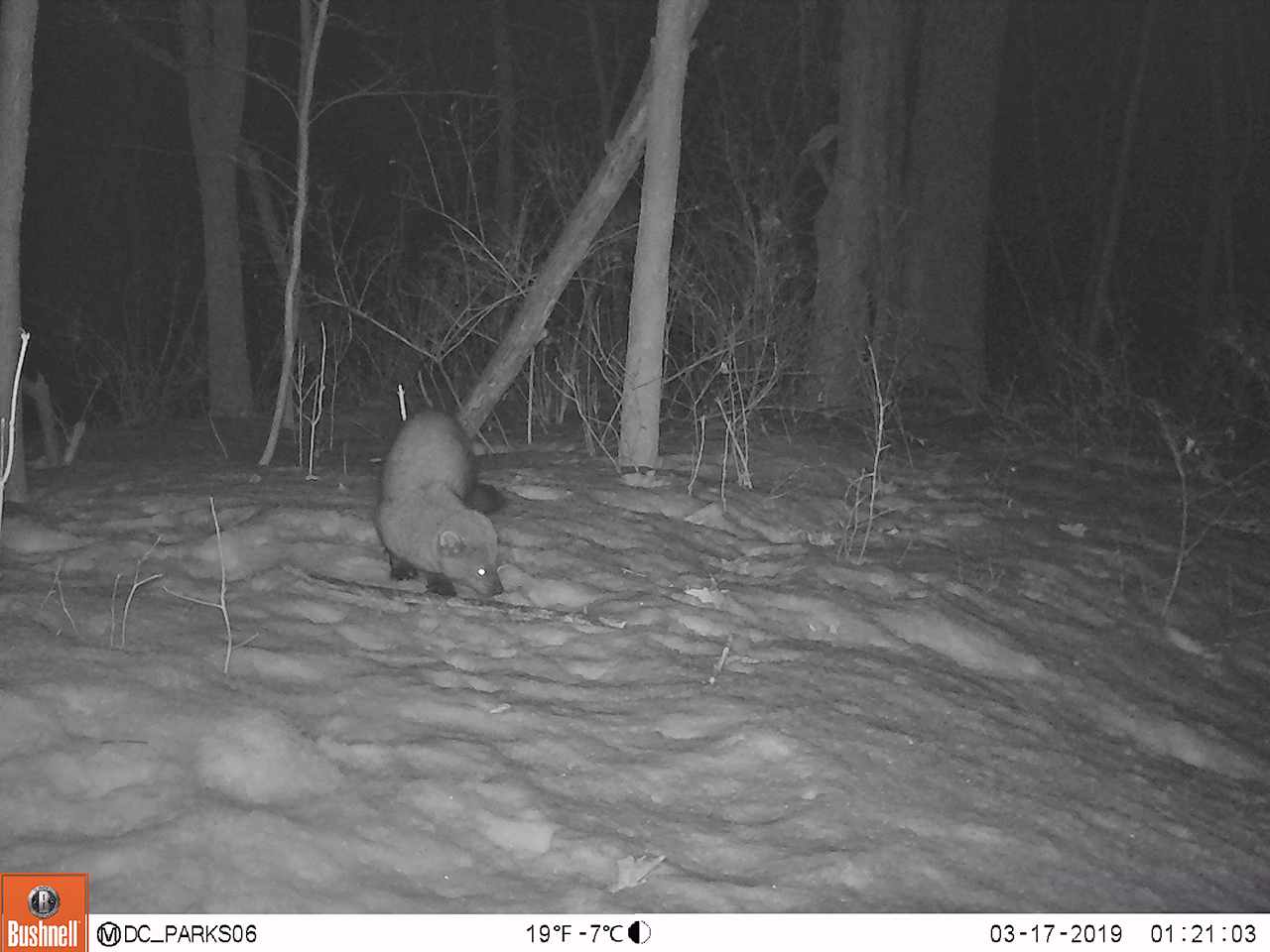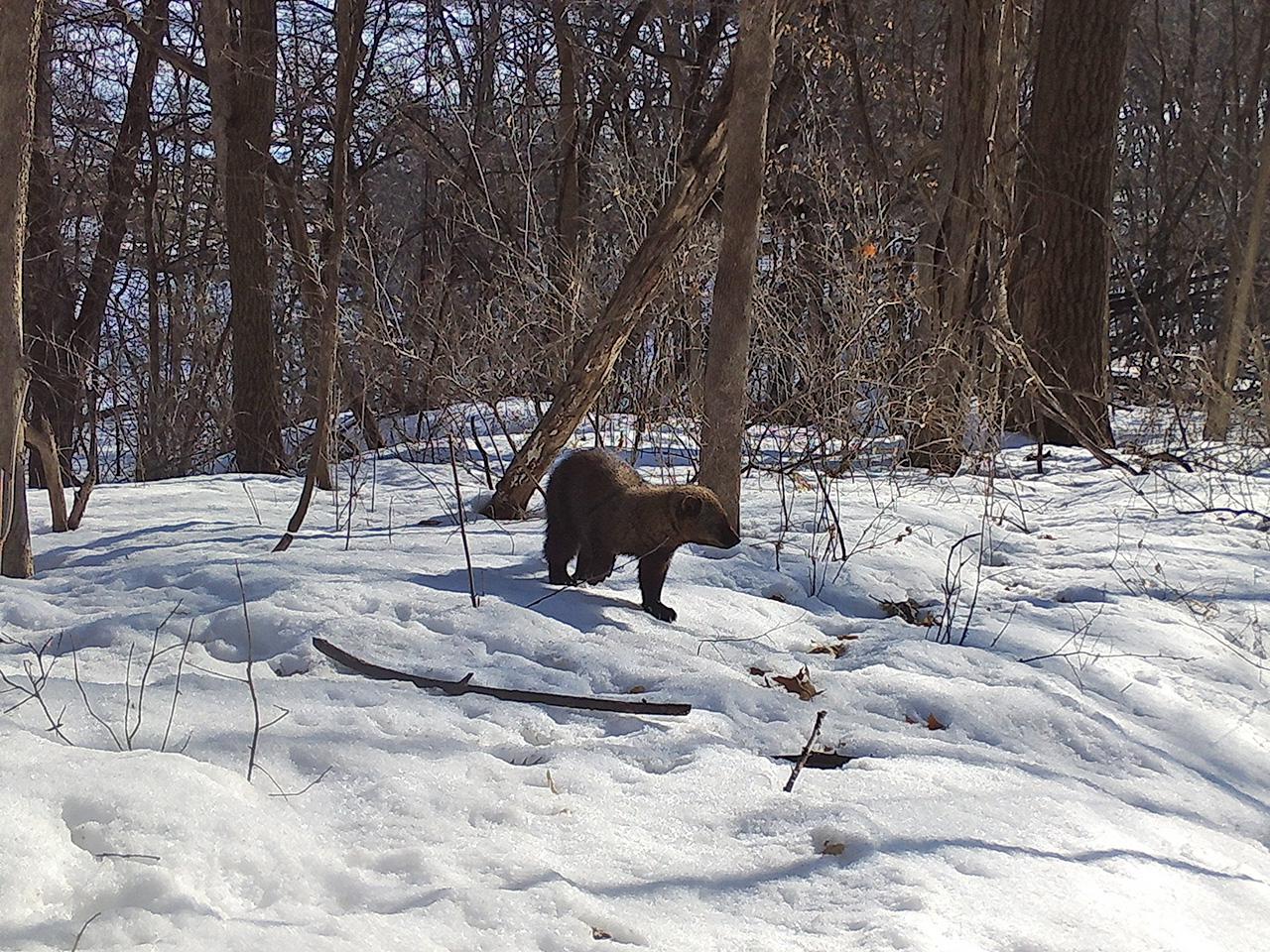Fisher spotted at FMR restoration site
Captured by Dakota County Parks on their wildlife camera at Spring Lake Park, this fisher is active during the day, though fishers are primarily nocturnal. (Photo credit: Dakota County Parks wildlife camera)
In January, I was traipsing through Spring Lake Park Reserve in Dakota County, where FMR has been working on prairie and woodland restoration. There was very little snow on the ground, but about half an inch had just fallen overnight.
As I walked the paved trail through the oak forest along the river, I noticed I was the first human to leave my footprint in the fresh snow. But I was most certainly not the first animal — the trail was a veritable jumble of tracks and conditions were perfect for getting a good “read” of them.
I was marveling at how many animals there seemed to be in this patch of woods and having fun tallying them — squirrel, rabbit, fox, mouse, vole (or was it a shrew?) — when what to my wondering eyes did appear, but what I felt sure was a weasel track, the size of a fisher.
 The coyote track on the left is oblong, with the outside toes partially behind the inner toes. It is also directed to the left. Compared to a coyote, the fisher track on the right shows a much wider rear pad, and all the toes are in the front of the pad.
The coyote track on the left is oblong, with the outside toes partially behind the inner toes. It is also directed to the left. Compared to a coyote, the fisher track on the right shows a much wider rear pad, and all the toes are in the front of the pad.
Back and forth I went, trying to get the best possible image of those tracks, comparing them to the coyote tracks, until I felt sure it had to be a fisher.
I consulted several colleagues afterward who concurred. Intrigued, Dakota County Parks set up a wildlife camera to see if they could spot this critter.
Several nail-biting weeks later — voila! — Dakota County let us know that they captured a fisher on their camera.
 The fisher resembles a mink, but is much larger, up to 18 pounds. Mink only weigh 2-4 pounds. (Photo credit: Dakota County Parks wildlife camera)
The fisher resembles a mink, but is much larger, up to 18 pounds. Mink only weigh 2-4 pounds. (Photo credit: Dakota County Parks wildlife camera)
Why we're so excited
Although not endangered, fishers were extirpated from some states and nearly extinct in Minnesota in the early 1900s due to trapping for their pelts. And fishers are commonly thought of as living in the north woods of Minnesota.
Though rarely seen in our metro area, wildlife cameras like those at Spring Lake Park Reserve may give us clues that the range of fishers extends farther south than we realized; or perhaps they are adapting to the different conditions of the southern woods.
Fisher features
Fishers are one of eight mustelids (species that belong to the weasel family) in Minnesota, of which they're one of the biggest at 2 feet long. The other mustelids are the river otter, American marten, American badger, mink, least weasel, short-tailed weasel and long-tailed weasel.
All mustelids have short legs and, other than the badger, long, flexible bodies. They are extremely agile and their tube-like body shape makes it easy for them to access tunnels and holes to seek prey. All are carnivores.
Fishers, contrary to their name, rarely catch fish, but they will eat them. Snowshoe hares are their favorite food. They also eat mice, voles, raccoons, nuts and berries.
A unique thing about fishers is that they are one of the few animals that can eat porcupines. They repeatedly attack a porcupine's face until it gets fatigued.
Fishers are excellent tree climbers, hence their woodland homes. Their present-day range is forested areas of along the U.S.-Canada border from Minnesota to the east, and parts of southern Canada and the western U.S.
You can learn more about fishers at the Minnesota Department of Natural Resources page.
How you can help
Have you seen a fisher or fisher tracks in the Twin Cities? Please let us know! It's thrilling to see that these animals are able to find suitable habitat in our nearby woodlands.
Thanks to Dakota County Parks for installing and monitoring the cameras, and for their commitment to habitat restoration at the parks.
